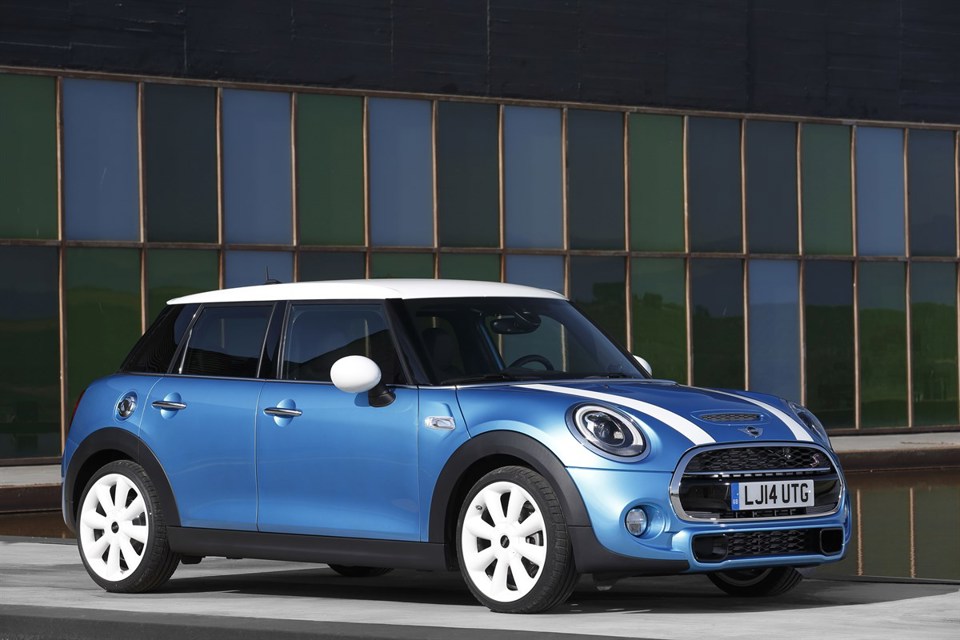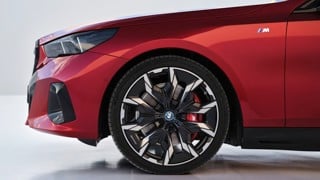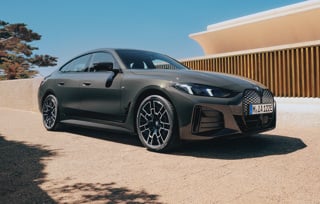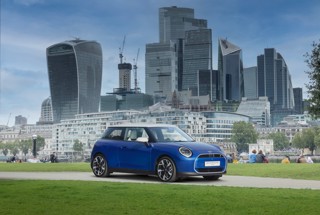Mini's five-door hatchback will have greater appeal, says the carmaker. Sarah Tooze reports.
Mini is gearing up for fleet growth with the launch of the first five-door version of its hatchback this month.
Until now the manufacturer’s fleet sales have been hampered because its only five-door model, the Countryman, straddles the lower medium and crossover sectors.
“The five-door hatch will open us up to a wider range of customers because there are companies who will have a four- or five-door or five-seat policy where Mini has been excluded,” says Chris Brownridge, director of Mini UK.
“Although we have the Countryman, it’s still a car of a certain size. This new model broadens our portfolio. It effectively unlocks the door to a lot of mainstream fleets who in the past might have looked at Mini and thought ‘it’s a great car but it’s not going to meet our basic needs’.”
Last year, Mini sold 5,000 units (about 9% of its total) to fleets. This year, that figure is set to rise to around 7,000 (12-13%). Longer term, Brownridge is forecasting that fleet will account for 20% of Mini’s new car sales.
“We’ve got the right products with the right attributes, a strong brand and really attractive running costs so there’s no real barrier,” he says.
The five-door Cooper D has CO2 of 95g/km and an official combined fuel economy of 78.5mpg. The wheelbase is 10cm longer than the three-door hatch’s and, at 278 litres, the boot is around 30% larger than that of the three-door model.
The five-door is £600 more than the three-door model, with P11D prices starting at £15,845.
Brownridge believes the new model will prove particularly attractive to salary sacrifice drivers.
“We’re expecting significant interest,” he says. “If you look at the tax position of the car, even with automatic transmission, it’s a very attractive proposition in that segment.
“It’s got all the key ingredients – low running costs, high residual values and low CO2 emissions. The technology in it is the sort you would expect in an executive car – features like lane departure warning, advanced collision warning, radar cruise control and head-up display.
“These are available in option packages which will attract a residual value which brings down the cost to the end-user.”
A TLC service package, which covers servicing for the first five years/50,000 miles, is standard for corporate customers.
If a fleet customer chooses to contract hire rather than outright purchase, Brownridge believes the leasing company should pass the cost savings on.
“I would expect that because it’s a competitive market and customers will demand value for money,” he says.
“The whole reason for offering TLC to the marketplace is to make Mini as attractive as possible to the end-user fleets.”
Additional packages, called TLC XL, extend the mileage and cover wear and tear items.
Mini has also launched an aftersales corporate charter (see panel above) – essentially 10 commitments to customers, including guaranteed lead times for servicing.
It checks that dealers stick to those commitments through a five-star system whereby customers rate dealerships for sales and service.
“We know from our research a customer will drive past a three-star dealer to go to a four-star dealer,” says Brownridge.
“By putting that process in place it’s given the customer the opportunity to give direct feedback, but it’s also allowed our retailers to really listen to what the customers want and we’ve seen huge strides in improvement in terms of the scoring since we launched the programme.”
All of Mini’s 150 dealers now have four- or five-star ratings, with 18 dealers having five stars for both sales and service.
Mini compares the ratings of company car drivers and retail customers and “typically, the experiences that customers have don’t really change”, says Brownridge.
Customer satisfaction levels are higher at dealerships which have Mini Geniuses – employees whose job is to know the product inside out and can explain the technology to customers and talk them through specification. This initiative is being rolled out across the dealer network.
Mini has also introduced an application (Mini Launch Pad), which gives fleet customers access to the latest running costs, pricing and model information on their tablet or PC.
“It’s access to information in a business-oriented way rather than in a marketing way,” says Brownridge.
Every dealership has a corporate business development manager who is able to answer questions about tax, operating costs and SMR.
Mini uses BMW’s training academy in Reading to train its dealer network and its fleet sales team are part of the BMW corporate sales function.
“We have a team that represents Mini and BMW and we have different sub-divisions of that team,” says Brownridge. “I anticipate growing that resource within the next six months quite significantly.”
Mini will continue to have shared resource with BMW on the basis that “we’re dealing with the same group of people”.
“We’ve had a lot of changes over the past three years within our senior management structure,” Brownridge says.
“We’ve got some very exciting plans for the next three to five years.
“The new hatch is the first chapter, the five-door is the second and there is more to come.”
He adds: “Following the five-door we anticipate having additional product which will be very well suited to the fleet market but you’ll have to watch this space.”























Login to comment
Comments
No comments have been made yet.